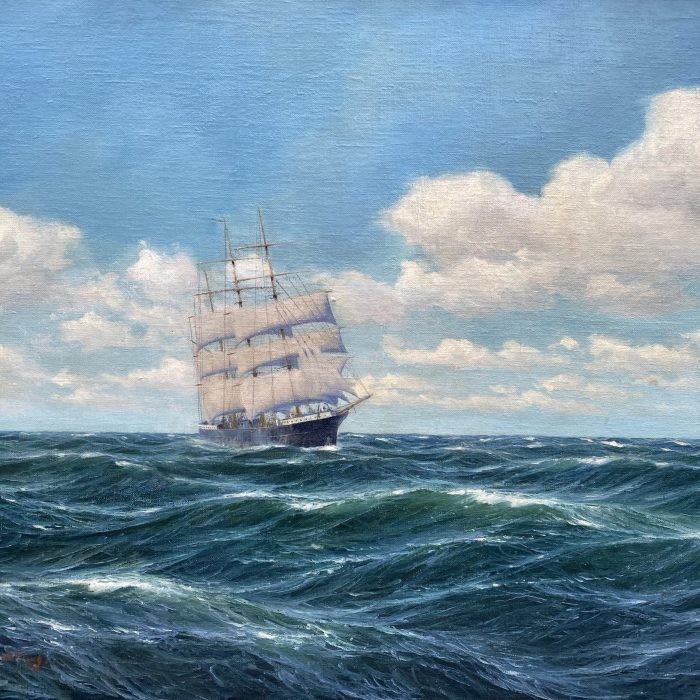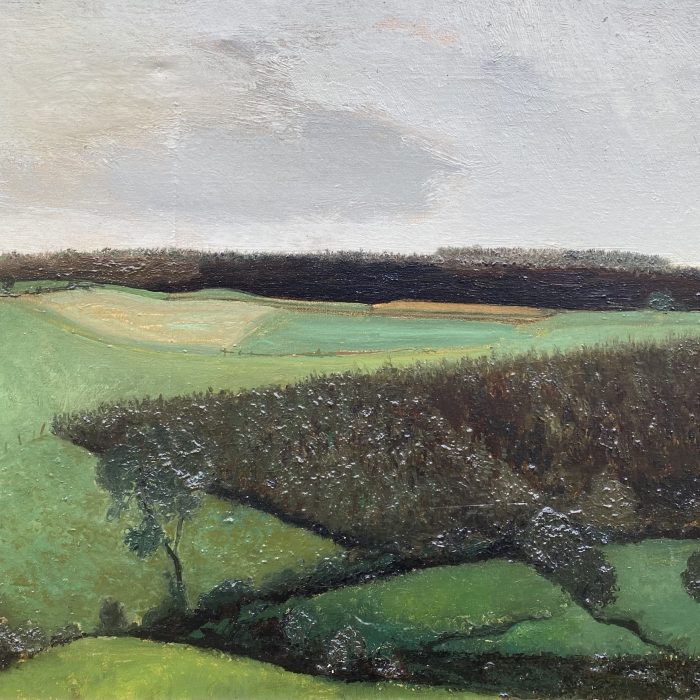Krapina 1897 – 1980 Zagreb
Croatian Painter
A Village Scene of Croatian Zagorje
Tomasevic Ernest (Tomašević Ernest), born on January 12, 1897, in Krapina, and passing on May 8, 1980, in Zagreb, stands as a distinguished figure in Croatian modernism. His journey into the world of art began after completing construction school in 1916. In 1918, he enrolled in the Higher School of Art and Craft in Zagreb, where he studied under the guidance of Professor Ljubo Babić. He graduated in 1921, a milestone that marked the start of a prolific and influential career.
Seeking to refine his artistic skills, Tomašević ventured to Berlin later that year, immersing himself in the vibrant and dynamic European center of applied arts and design. This experience enriched his perspective and honed his craft, paving the way for his future contributions to modern art.
Upon his return to Zagreb in 1923, Tomašević, alongside Oto Postružnik, established a private painting school. This institution operated until 1930 and became a cradle for modern artistic thought and practice, reflecting the shared vision of Tomašević and Postružnik. Their collaboration underscored their commitment to modernism and their influence on a new generation of artists.
Tomašević’s career was marked by his tenure as an educator. From 1933 to 1940, he taught at the School of Applied Arts, later joining the Academy of Fine Arts from 1940 to 1949, and subsequently the Academy of Applied Arts from 1949 to 1955. His pedagogical efforts were instrumental in shaping the artistic landscape of Croatia.
As an artist, Tomašević’s oeuvre is diverse and evolving. His early work, particularly in graphics, sought to balance composition with a liberated approach to space, as seen in pieces like “Trsje” (1920). The 1930s witnessed a shift towards rich coloristic structuring in a series of female nudes, exemplified by “Nude in an Armchair” (1932). Influenced by expressionism, he later aligned with the social program of the Earth Group (Zemlja), creating compositions with pure, vibrant colors, such as “At the Drink” (1935).
In subsequent decades, Tomašević’s palette mellowed, reflecting subdued chromatic values in works like “Ksaver” (circa 1950) and “Autumn in Zagorje” (1970). His versatility extended beyond painting; from 1926, he ventured into ceramics, producing colored ceramic sculptures with pronounced grotesque forms, like “Rococo Figure” (circa 1926). His artistic repertoire also included designs for marquetry, artistic craft items, book illustrations, and designs.
Ernest Tomašević’s contributions were recognized with numerous accolades, the pinnacle being the “Vladimir Nazor” Lifetime Achievement Award in 1971. His legacy endures through his innovative works and the impact he had on students and the broader artistic community. Today, Tomašević is remembered as a master of Croatian modernism, whose creative spirit and dedication to art continue to inspire.






